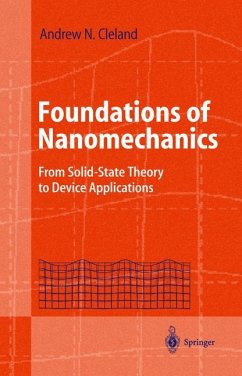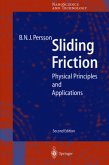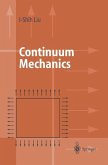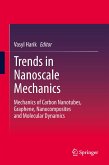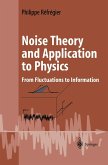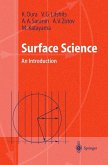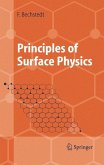Why write another book on mechanics? There are, after all, a number of excellent texts that describe in great detail the way classical solids behave when acted upon by static and time-varying forces; many of these are cited in this monograph. These texts treat solids as continuous objects, and quantum mechanics does not enter the discussion. Furthermore, the atomic nature of the solid is implicit, but does not enter in a central role. At the other end of the spectrum, texts on condensed matter physics focus on the quantum mechanical nature of the solid; these contain quite clear descriptions of acou stic waves in solids, describing their dynamic and thermal properties, and how they interact with electrons in the solid, but contain little information regarding bulk deformations. This text, focussing on the mechanics of very small objects, attempts to provide a link between these two approaches; in addition to describing the theories of both the classical and the quantum mechanicalsolid, I attempt to outline where the classical description breaks down, and quantum mechanics must be applied, to understand the behavior of a nanoscale object. I have tried to merge the continuum description of the solid with the atomic one, and to show how and where quantum mechanics plays a role, especially as the size scale of the system is reduced, making the quantized energy scale larger and the role of thermal vibrations more important.
"The potential for the field of nanotechnology to transform civilization-with major applications in areas that span materials, biology, manufacturing, and information technology-is breathtaking ... Progress in nanoscale technology requires a fundamental understanding of the intermediate realms between those scales and a concomitant educational effort to transform into applications the knowledge that scientists have gained in those realms. Foundations of Nanomechanics: From Solid-State Theory to Device Applications, a text on the solid mechanics of very small objects, addresses this educational need head-on. Andrew Cleland is intimately familiar with the task he undertakes in this book ... The book, aimed at advanced undergraduates and beginning graduate students, joins in one treatise an engineering treatment of solids as continuum objects with a condensed matter physics focus on the quantum mechanical nature of solids. Beginning with a bottom-up atomistic description of matter, Cleland seamlessly works his way up, in the first seven chapters, to a continuum description of matter. Topics range from the dynamical motion of a two-atom system and the quantum and thermodynamic behavior of linear chains to atomic lattices, elasticity and deformation of solids, and the dynamical behavior of solids. The final chapters are devoted to dissipation and noise-topics that loom large at the nanoscale-and experimental fabrication techniques for today's nanostructures ... The most apparent use for Cleland's book is in a semester- or year-long, special topic course on nanomechanics. The author also suggests it as a useful reference for the practicing scientist or engineer ... Used a little or used a lot, Foundations of Nanomechanics will be useful all around!' -- 'The book, aimed at advanced undergraduates and beginning graduate students, joins in one treatise an engineering treatment of solids as continuum objects with a condensed matter physics focus on the quantum mechanical nature of solids. ... No book ... fills the unique role provided by Cleland's monograph. ... Used a little or used a lot, Foundations of Nanomechanics will be useful all around!" (Jacqueline Krim, Physics Today, May, 2004)
From the reviews:
PHYSICS TODAY (MAY 2004)
"The potential for the field of nanotechnology to transform civilization-with major applications in areas that span materials, biology, manufacturing, and information technology-is breathtaking ... Progress in nanoscale technology requires a fundamental understanding of the intermediate realms between those scales and a concomitant educational effort to transform into applications the knowledge that scientists have gained in those realms. Foundations of Nanomechanics: From Solid-State Theory to Device Applications, a text on the solid mechanics of very small objects, addresses this educational need head-on. Andrew Cleland is intimately familiar with the task he undertakes in this book ... The book, aimed at advanced undergraduates and beginning graduate students, joins in one treatise an engineering treatment of solids as continuum objects with a condensed matter physics focus on the quantum mechanical nature of solids. Beginning with a bottom-up atomistic description of matter, Cleland seamlessly works his way up, in the first seven chapters, to a continuum description of matter. Topics range from the dynamical motion of a two-atom system and the quantum and thermodynamic behavior of linear chains to atomic lattices, elasticity and deformation of solids, and the dynamical behavior of solids. The final chapters are devoted to dissipation and noise-topics that loom large at the nanoscale-and experimental fabrication techniques for today's nanostructures ... The most apparent use for Cleland's book is in a semester- or year-long, special topic course on nanomechanics. The author also suggests it as a useful reference for the practicing scientist or engineer ... Used a little or used a lot, Foundations of Nanomechanics will be useful all around!"
"The book, aimed at advanced undergraduates and beginning graduate students, joins in one treatise an engineering treatment ofsolids as continuum objects with a condensed matter physics focus on the quantum mechanical nature of solids. ... No book ... fills the unique role provided by Cleland's monograph. ... Used a little or used a lot, Foundations of Nanomechanics will be useful all around!" (Jacqueline Krim, Physics Today, May, 2004)
PHYSICS TODAY (MAY 2004)
"The potential for the field of nanotechnology to transform civilization-with major applications in areas that span materials, biology, manufacturing, and information technology-is breathtaking ... Progress in nanoscale technology requires a fundamental understanding of the intermediate realms between those scales and a concomitant educational effort to transform into applications the knowledge that scientists have gained in those realms. Foundations of Nanomechanics: From Solid-State Theory to Device Applications, a text on the solid mechanics of very small objects, addresses this educational need head-on. Andrew Cleland is intimately familiar with the task he undertakes in this book ... The book, aimed at advanced undergraduates and beginning graduate students, joins in one treatise an engineering treatment of solids as continuum objects with a condensed matter physics focus on the quantum mechanical nature of solids. Beginning with a bottom-up atomistic description of matter, Cleland seamlessly works his way up, in the first seven chapters, to a continuum description of matter. Topics range from the dynamical motion of a two-atom system and the quantum and thermodynamic behavior of linear chains to atomic lattices, elasticity and deformation of solids, and the dynamical behavior of solids. The final chapters are devoted to dissipation and noise-topics that loom large at the nanoscale-and experimental fabrication techniques for today's nanostructures ... The most apparent use for Cleland's book is in a semester- or year-long, special topic course on nanomechanics. The author also suggests it as a useful reference for the practicing scientist or engineer ... Used a little or used a lot, Foundations of Nanomechanics will be useful all around!"
"The book, aimed at advanced undergraduates and beginning graduate students, joins in one treatise an engineering treatment ofsolids as continuum objects with a condensed matter physics focus on the quantum mechanical nature of solids. ... No book ... fills the unique role provided by Cleland's monograph. ... Used a little or used a lot, Foundations of Nanomechanics will be useful all around!" (Jacqueline Krim, Physics Today, May, 2004)

